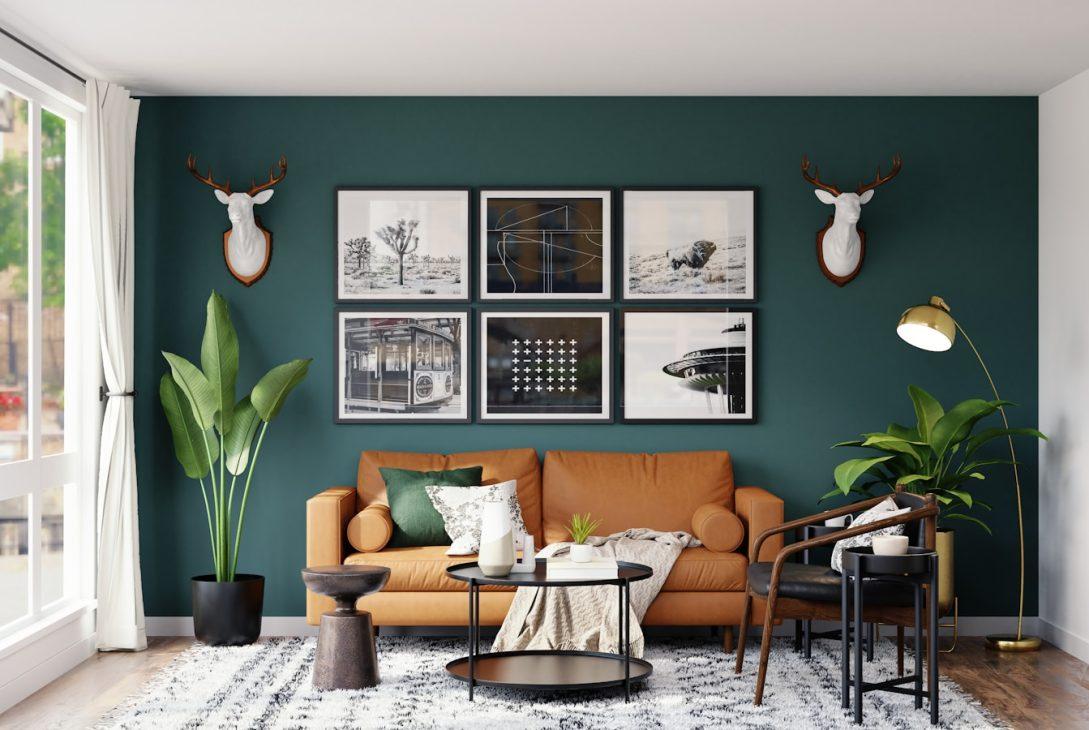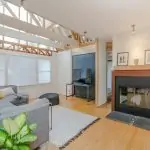Your home tells your story through design choices and personal touches. Every room reflects priorities, values, and aesthetic preferences. Creating intentional spaces transforms houses into homes you genuinely love. Understanding design principles enables confident decision-making aligned with your vision.
1. Establishing Your Design Foundation
Discovering Your Personal Style
Your design style emerges from what naturally appeals to you. Collecting inspiration from magazines, Pinterest, and homes reveals patterns. Notice recurring colors, materials, and aesthetics. Your preferences guide authentic design choices. Honoring your taste creates spaces you’ll love long-term.
Design styles range from minimalist to maximalist approaches. Modern minimalism emphasizes clean lines and open spaces. Traditional design celebrates classic proportions and details. Eclectic mixing combines varied styles cohesively. Industrial design celebrates raw materials and functionality. Understanding your preference shapes your direction.
Personality should dominate design decisions over trends. Trendy spaces become dated quickly requiring updates. Personal style remains relevant through decades. Authentic environments feel genuinely like home. Your comfort matters more than impressing others.
Creating Mood and Atmosphere
Color psychology shapes how spaces feel emotionally. Warm colors create welcoming, energetic atmospheres. Cool colors promote calm and focus. Neutral palettes provide flexibility and peace. Understanding color impact guides palette selection.
Lighting profoundly affects space perception and mood. Bright lighting energizes while dim lighting soothes. Layered lighting provides flexibility for different moods. Natural light connects interiors to outdoors. Professional lighting design transforms spaces dramatically.
Texture and materials add depth and interest. Soft fabrics create comfort and warmth. Hard surfaces convey modern sophistication. Mixed textures create visual and tactile interest. Thoughtful material selection enhances design impact.
2. Furniture Selection and Arrangement
Choosing Statement Pieces
Modern coffee tables serve as focal points anchoring living spaces. Quality tables combine beauty with functionality. Unique designs express personality distinctively. Statement pieces establish room character. Investing in key pieces creates lasting impact.
Sofas shape how spaces feel and function. Comfortable seating encourages gathering and relaxation. Scale matters relative to room dimensions. Quality construction ensures longevity. Sofa selection affects entire room perception.
Accent chairs add interest and flexibility. Different styles create eclectic interest. Multiple seating options accommodate guests. Colorful accents energize neutral spaces. Strategic placement improves functionality.
Space Planning and Flow
Room arrangement determines how spaces function daily. Traffic patterns should flow naturally. Furniture placement affects conversation and connection. Clear pathways prevent cluttered feeling. Thoughtful arrangement improves functionality.
Proportion and scale create balanced compositions. Large furniture suits spacious rooms. Small pieces crowd smaller spaces. Mixing scales creates visual interest. Appropriate scaling prevents awkward spaces.
Negative space prevents overwhelming visual clutter. Empty space lets eyes rest. Breathing room makes spaces feel larger. Balance between fullness and emptiness matters. Strategic spacing improves design impact.
3. Color Theory and Palette Development
Understanding Color Relationships
Complementary colors create vibrant, energetic combinations. Analogous colors create harmonious, peaceful palettes. Neutral palettes provide calm foundations. Understanding relationships guides cohesive selections. Color theory prevents clashing combinations.
Accent colors add personality to neutral backgrounds. Single accent wall creates focus without overwhelming. Colorful accessories introduce changing elements. Limited color palettes create unity. Strategic color use improves design cohesion.
Implementing Color Successfully
Testing colors before commitment prevents regret. Paint samples on walls reveal true appearance. Lighting affects color perception significantly. Viewing samples throughout the day shows variations. Proper testing prevents expensive mistakes.
Color intensity affects space perception. Dark colors make spaces feel smaller. Light colors expand perception of space. Matte finishes look calming. Glossy finishes reflect light energetically. Understanding intensity guides appropriate choices.
4. Lighting Design and Illumination
Layered Lighting Approach
Ambient lighting provides overall illumination. Bright fixtures ensure adequate visibility. Recessed lighting keeps spaces uncluttered. Layered approaches prevent harsh shadows. Strategic placement improves functionality.
Task and Accent Lighting
Task lighting focuses on work areas. Desk lamps enable focused reading and work. Under-cabinet lighting illuminates workspaces. Proper task lighting prevents eye strain. Functionality and aesthetics combine successfully.
Accent lighting highlights architectural features. Uplighting emphasizes ceiling height. Wall sconces create elegant ambiance. Strategic emphasis creates visual interest. Artistic lighting enhances design appeal.
5. Textiles and Soft Furnishings
Rugs and Floor Coverings
Area rugs define spaces and add warmth. Natural fibers breathe and age beautifully. Synthetic fibers resist staining practically. Proper sizing anchors furniture groups. Rugs add comfort and visual interest.
Curtains and Window Treatments
Curtains frame windows beautifully while providing function. Sheer fabrics diffuse light softly. Blackout curtains control light completely. Layered treatments provide flexibility. Quality fabrics enhance overall design.
Throw pillows and blankets add comfort and color. Pillows introduce patterns and textures easily. Blankets add coziness to seating areas. Seasonal changes refresh spaces affordably. Soft furnishings invite relaxation and comfort.
6. Accessories and Personal Expression
Displaying Collections and Art
Artwork personalizes spaces with meaning. Gallery walls showcase multiple pieces cohesively. Single large pieces create dramatic focal points. Rotating artwork refreshes spaces seasonally. Art collection reflects personal interests and aesthetics.
Best hunting tripod displays showcase hobbies and interests. Equipment display celebrates your passions. Sports memorabilia personalizes fan spaces. Hobby displays add authenticity and interest. Displaying interests makes homes feel genuine.
Books fill shelves with color and personality. Arranged by color creates artistic display. Mixed with decorative objects creates visual interest. Personal libraries reflect intellectual interests. Books humanize spaces beautifully.
Decorative Objects and Styling
Objects with history tell personal stories. Family heirlooms connect past to present. Travel souvenirs spark memories and conversation. Meaningful objects matter more than expensive ones. Personal significance creates authentic spaces.
Mirrors expand space and reflect light. Strategic placement multiplies visual interest. Decorative frames add elegance simply. Plants bring life and freshness indoors. Living elements animate static spaces.
7. Creating Functional Beauty
Storage Solutions That Look Good
Built-in shelving combines storage with display. Open shelving showcases attractive items. Closed storage hides everyday clutter. Thoughtful organization reveals what matters. Functional beauty eliminates visual chaos.
Multi-Purpose Furniture
Ottomans provide seating, storage, and surfaces. Benches offer seating and organization. Console tables serve decorative and functional purposes. Multifunctional pieces maximize small spaces. Smart furniture improves functionality elegantly.
8. Special Elements for Children’s Spaces
Creating Safe, Functional Kids’ Rooms
Children’s rooms grow with their changing interests. Age-appropriate design prevents rapid obsolescence. Durable materials withstand heavy use. Safety features prevent accidents. Functional design simplifies parenting and cleanup.
Incorporating Personal Style for Kids
Children’s gold earrings represent small touches bringing joy to young lives. Thoughtful accessories celebrate personality early. Quality pieces last through childhood. Personal touches create cherished memories. Small details matter tremendously to children.
Wall art and murals spark imagination. Themed spaces inspire creative play. Interactive elements encourage engagement. Age-appropriate design supports development. Thoughtful spaces nurture child wellbeing.
9. Seasonal Design Refreshes
Rotating Decorative Elements
Seasonal changes refresh spaces affordably. Changing throw pillow covers updates instantly. Rotating artwork prevents stale appearance. Seasonal colors mark time passages. Regular refreshes maintain design interest.
Holiday and Festive Decorating
Holiday decorations create special atmospheres. Thoughtful displays elevate seasonal spirit. Quality decorations last for years. Storage organization simplifies seasonal transitions. Festive touches create joyful memories.
10. Budget-Conscious Design Strategies
Shopping Smart and Prioritizing
Quality key pieces deserve investment. Secondary items can be budget-friendly. Thrift stores find unique affordable treasures. Sales and timing optimize purchases. Strategic shopping stretches budgets effectively.
DIY Projects and Customization
Painting furniture transforms spaces inexpensively. Stenciling adds patterns to walls. Rearranging proves free refreshes. Creative projects add personal touches. DIY work increases emotional connection.
Building Your Design Over Time
Slow design prevents hasty mistakes. Gradual accumulation creates thoughtful spaces. Living with pieces reveals true preferences. Patience enables better decision-making. Intentional building creates coherent designs.
Conclusion
Designing spaces reflecting your personality creates homes you genuinely love. Understanding design principles builds confidence in choices. Balancing aesthetics with functionality creates livable beauty. Your commitment to thoughtful design transforms houses into cherished homes.
Start your design journey this month by clarifying your personal style. Collect inspiration and identify recurring themes. Make one investment piece reflecting your vision. Gradually build your spaces with intention and authenticity.













